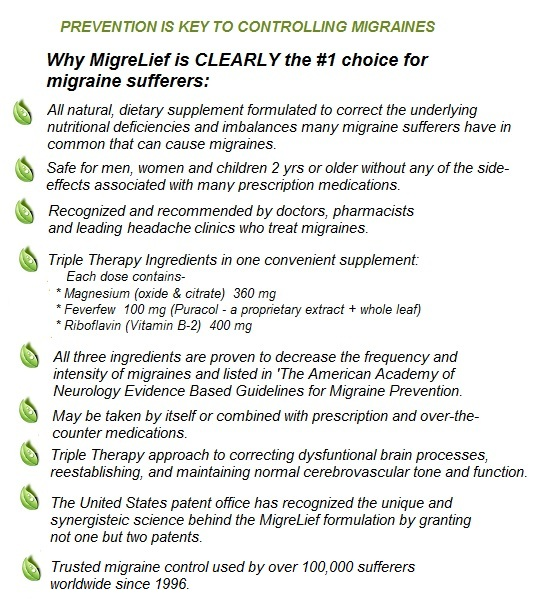Pain experience is individual. Everyone experiences pain differently, due to so many varying factors. Your current state of health, including whether or not other diseases are present, childhood experiences, mood, environment, and previous experiences of pain are all factors in how you experience pain now.
Pain is only good as a warning. According to the Institute of Medicine’s recently released study, “While pain sometimes can serve as a warning sign that protects individuals from further harm, chronic pain is harmful and impairs productivity and quality of life,” as you well know. In the same study (Relieving Pain in America, 2011), 85% of migraine sufferers had at least one significant medical condition (besides the headaches), and 15% of sufferers also reported major depression.
Pain hurts in more ways than one. Pain can produce psychological and cognitive effects — anxiety, depression, and anger. Anxiety occurs because of fear of the recurring pain, depression from the feeling of not being able to escape the pain, and anger at having to deal with the pain in the first place. If allowed to persist, acute pain can become chronic pain which makes physical changes in your body. Pain can become a disease in its own right, and ultimately, it can result in a dysfunction in your central nervous system (CNS).

Are you progressing toward CNS dysfunction? If you suffer from frequent migraines, you may recognize the beginnings of such dysfunction in the form of shadow pain, more frequent headaches, or more triggers from sources which were previously quite benign for you. You may feel as though you live in a frustrating and increasingly hostile world from which you desire to retreat. Your work, and thus your livelihood, may be impacted or threatened by frequent absences. The ball rolls on, continuing to take its toll on even your basic enjoyment of life. “Research,” reports the IOM study, “has shown quality of life [for migraine sufferers] to be inversely proportional to the frequency of migraine occurrence.”
Prevention is crucial. This is why pain management and the role of prevention is so crucial to restoring quality of life for the migraineur. While the medical community currently focuses on abortives (medications to rid the sufferer of immediate pain) and palliation (making one comfortable in the midst of pain), the IOM stresses the importance of understanding triggers, conditions, and causes of the pain, along with preventive treatments, in order to eliminate the outcomes of chronic pain — that physiological change that occurs with chronic suffering.
You can stop pain’s progress. The good news is that even if those changes have already occurred, there are measures you can take to reverse the changes. Although it will be a difficult path, the reward is stopping the progress of chronic pain as disease, healing your body, and drastically reducing the incidence, and even possibly the complete cessation of the headaches.
If your headaches have not progressed to point of morbidity, you can take measures to prevent your headaches from progressing from acute to chronic.
If you are currently a chronic migraine sufferer, you too, are a great fit for migraine prevention.
The Road to Preventing Migraines
The most important step to lifelong migraine relief is prevention. Prevention includes understanding and resolving the underlying cause(s) of the headaches. This helps one to avoid the environment or the set of triggers for headache pain to occur in the first place, or, having experienced pain in its acute form, to prevent the pain from becoming chronic.
Migraines can be prevented. NPR (National Public Radio) published a June 2012 article about the fact that there are migraine preventives, but their statistics show that only between 3 and 13% of people use preventives. According to conventional medicine, 38% of migraines can be prevented. Natural medicine practitioners know that many more than that can be prevented.
Dr. Jamie Von Roenn and her associates said in 1993, “For at least two decades, most major medical journals and the lay media have recognized that many patients have needless pain.” Dr. Von Roenn has been a pioneer in palliative (pain relief) medicine. Another decade has passed since she made that statement.
Migraine experience is individual. Despite many years of research and observation, the medical community has never “officially” determined exactly what causes migraines. Part of that is due to the individual nature of the experience. While there are common triggers, symptoms, and patterns, the underlying cause is extremely complex and individual. The most that the medical community has been able to determine concretely is that the majority of migraineurs have a family history of migraineurs. Fully 85% of migraine sufferers have a family member who also suffers or has suffered from migraines.
Lack of scientific determinates, however, does NOT prevent a fuller understanding of the phenomena by both user and intuitive practitioner. (Use of the term “intuitive” here implies any member of the medical community who applies intuition and analysis, in addition to empirical knowledge, in order to understand a medical phenomenon.)
There are several avenues toward prevention. You are your own best advocate. Only you know how you experience your migraine pain. Only you have the key to your personal headache “structure,” all of the elements that go into creating your migraines. According to the 2011 IOM (Institute of Medicine) study, a gamut of “upstream” influences shape conditions and behaviors that produce or exacerbate disease, in this case, your pain. It appears that, although there may be specific pain triggers, that the entire milieu surrounding your migraines may be more complex.
Commit to the discovery process. Prevention requires work, self-study and analysis, and a willingness to apply what is learned. The ultimate goal, of course, is to eradicate the headaches entirely, but how does one do that if they keep occurring during the discovery process, and they begin to escalate? One answer is to treat with a preventive remedy while working to discover the root causes. While the easiest thing may be to take an abortive (something to stop the pain), abortives are rarely natural, and side-effect pharmaceutical abortives may cause far more problems than they solve.
Consider starting with MigreLief – The immediate goal is to reduce the incidence of the migraines. Cutting migraines by half, say from a dozen migraines a month down to six or three is huge. The triple therapy of MigreLief can help achieve this, and can possibly eliminate them all together. Using MigreLief during the discovery process could stop your headaches from progressing, enabling you to concentrate more on finding and eliminating causes.
Migraines should not be a lifestyle. Take control, consider prevention over treating the symptoms of migraine pain for life.
ABOUT CURT HENDRIX – THE SCIENTIST BEHIND MIGRELIEF
Curt Hendrix M.S. C.C.N. C.N.S is the chief science officer for both Akeso and Concourse Health Sciences, a pharmaceutical company developing prescription drugs from natural compounds. Mr. Hendrix has been named as the Principal Investigator in multiple National Institutes of Health (NIH) governmental grants studying the benefits of natural medicines on disease.Formed in 1992, Akeso is a professional, natural medicine/dietary supplement company. Over the last 15 years MigreLief has helped hundreds of thousands find solutions to the pain and suffering of debilitating migraine headaches. Two international patents have been granted covering the unique MigreLief formulation.
The information on this Website is for educational purposes only and is not intended to replace the advice of physicians or health health care practitioners. It is also not intended to diagnose or prescribe treatment for any illness or disorder.
Find out more at MigreLief.com – See blog for more health information and coupons



